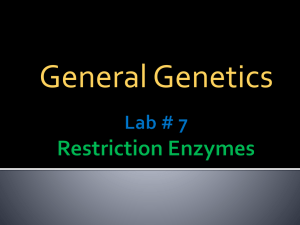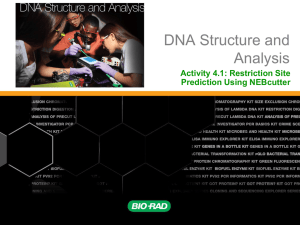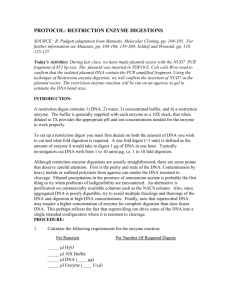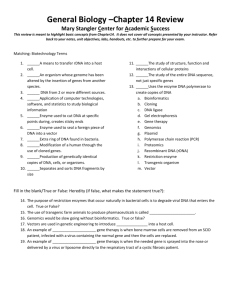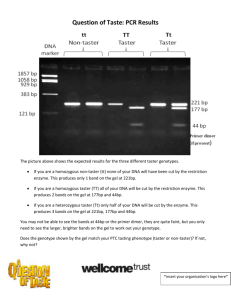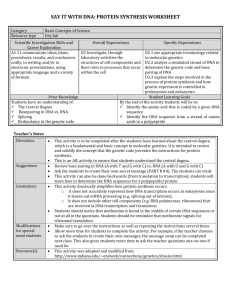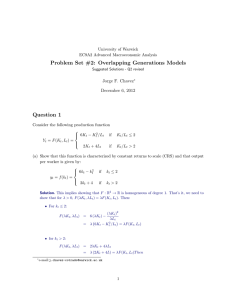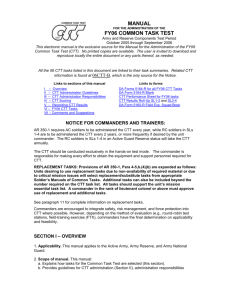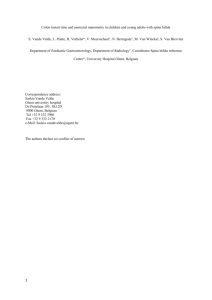Quick Lab 15 Inserting Genetic Markers
advertisement
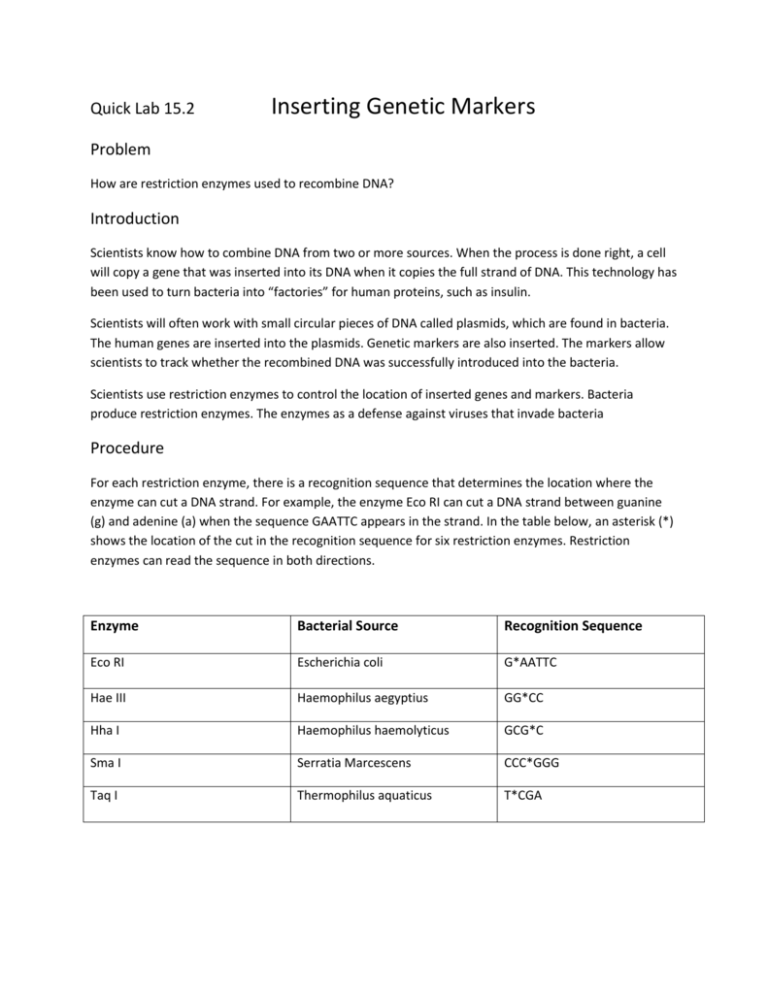
Quick Lab 15.2 Inserting Genetic Markers Problem How are restriction enzymes used to recombine DNA? Introduction Scientists know how to combine DNA from two or more sources. When the process is done right, a cell will copy a gene that was inserted into its DNA when it copies the full strand of DNA. This technology has been used to turn bacteria into “factories” for human proteins, such as insulin. Scientists will often work with small circular pieces of DNA called plasmids, which are found in bacteria. The human genes are inserted into the plasmids. Genetic markers are also inserted. The markers allow scientists to track whether the recombined DNA was successfully introduced into the bacteria. Scientists use restriction enzymes to control the location of inserted genes and markers. Bacteria produce restriction enzymes. The enzymes as a defense against viruses that invade bacteria Procedure For each restriction enzyme, there is a recognition sequence that determines the location where the enzyme can cut a DNA strand. For example, the enzyme Eco RI can cut a DNA strand between guanine (g) and adenine (a) when the sequence GAATTC appears in the strand. In the table below, an asterisk (*) shows the location of the cut in the recognition sequence for six restriction enzymes. Restriction enzymes can read the sequence in both directions. Enzyme Bacterial Source Recognition Sequence Eco RI Escherichia coli G*AATTC Hae III Haemophilus aegyptius GG*CC Hha I Haemophilus haemolyticus GCG*C Sma I Serratia Marcescens CCC*GGG Taq I Thermophilus aquaticus T*CGA 1. Examine the base sequence below. Use a caret (^) to mark the location in the sequence where the Eco RI enzyme could cut the DNA. Use a vertical line to mark a location where the Taq I enzyme could cut the DNA. CTT CGA TAT CAG ATT TAA ATC GCG TGT GTA CTT ACT GGG GAT CGC ATC ACG GTG AAT TCC CCC CTT CTC TAC CTC CTT TGA ATT CGA ACT ACA GCG CTT CCC GGG TTT 2. Use a caret to mark the locations where the Hha I enzyme could cut the DNA. Read the sequence in both directions CTT CGA TAT CAG ATT TAA ATC GCG TGT GTA CTT ACT GGG GAT CGC ATC ACG GTG AAT TCC CCC CTT CTC TAC CTC CTT TGA ATT CGA ACT ACA GCG CTT CCC GGG TTT 3. Use a caret to mark the location where both the Sma I enzyme and the Hae III enzyme could cut the DNA CTT CGA TAT CAG ATT TAA ATC GCG TGT GTA CTT ACT GGG GAT CGC ATC ACG GTG AAT TCC CCC CTT CTC TAC CTC CTT TGA ATT CGA ACT ACA GCG CTT CCC GGG TTT Analyze and Conclude 1. Predict Suppose the recognition sequence for a restriction enzyme appears three times along a DNA strand. What could happen when the enzyme is used to insert a gene into a plasmid? 2. Infer Which restriction enzyme might give scientist more control over the location of an inserted gene- Eco RI or Hae III? Why? 3. Infer How could restriction enzymes help bacteria defend against viruses? (Hint- viruses contain nucleic acids.)

